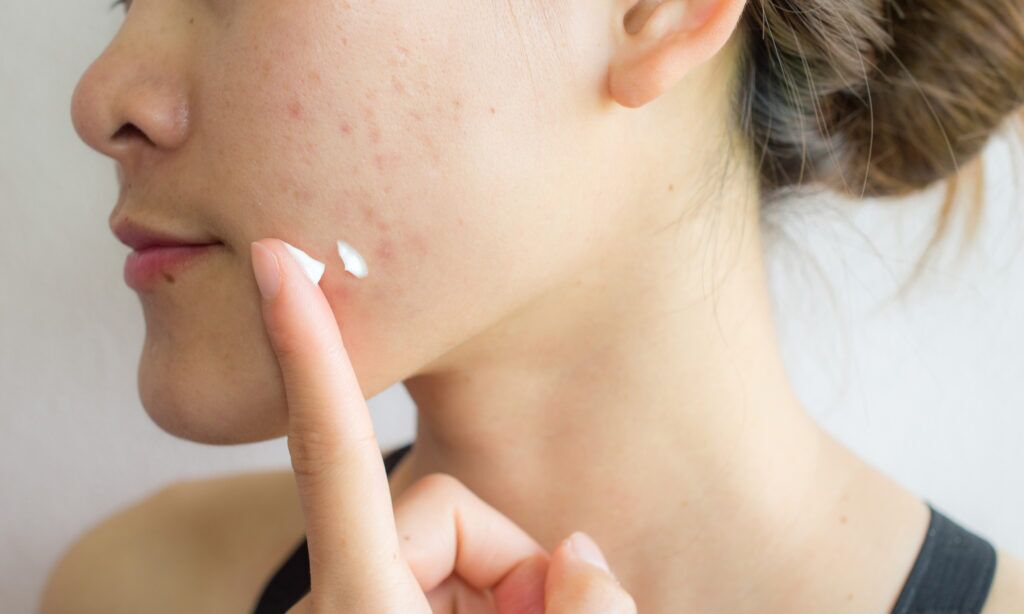
In the fight against signs of aging, vitamin A is a skin-care ingredient like no other. It penetrates deep beneath the surface of the skin to stimulate collagen production and provide an assortment of benefits. Most of us are familiar with retinol as the common over-the-counter solution and Tretinoin as the stronger prescription-strength choice. But there is an option that lies in between the two that has just as plentiful benefits. Enter retinal—like the others, it can be a helpful ingredient on the road to younger-looking skin. Though similar in name, retinal and retinol are different products. Ahead, we chatted with three experts for the full breakdown of the vitamin A’s more elusive form.
Featured experts
- Ryan Turner, MD is a board-certified dermatologist in New York and co-founder of TRNR Skin
- Dendy Engelman, MD is a board-certified dermatologist in New York
- Samantha Susca
is the lead aesthetician at Casa Cipriani New York Spa
What is retinal?
Retinal, or retinaldehyde, is a form of vitamin A that has potent skin benefits. But before diving deep into its advantages and what makes it unique, it’s helpful to understand how vitamin A works. Retinoic acid is the one form of vitamin A the skin recognizes as an active ingredient. It’s the purest and strongest form of vitamin A and is found only in prescription-strength products like Tretinoin. That said, all other retinoids need to be converted to retinoic acid for your skin to reap its benefits. New York dermatologist Ryan Turner, MD explains that the conversion process can occur multiple times to reach retinoic acid. However, with each conversion, the retinoid becomes less potent and less irritating.
In the retinoid metabolism process, three conversions take place before retinoic acid is formed. Retinal is the last step before the final product and is therefore the strongest non-prescription form of vitamin A.
Retinal vs. retinol
Retinal and retinol are both efficacious forms of vitamin A, but they differ vastly in potency. “Retinal is stronger than retinol and works faster, leading to more immediate results,” says New York dermatologist Dendy Engelman, MD. Looking at the conversion process as a pathway, retinol occurs first, then retinal and finally retinoic acid. Retinal is the midway point between over-the-counter retinol products and Tretinoin.

What are the benefits of retinal and who should use it?
The benefits of vitamin A remain the same from one form to the next. “All retinoids offer the same advantages—it’s just a matter of speed and efficiency,” says Dr. Turner. With use over time, you can expect to see a decrease in the common signs of aging, such as fine lines and wrinkles. More specifically, aesthetician Samantha Susca says the benefits range from an increase in cellular turnover at deeper layers within the skin, increased collagen production, a decrease in cellular mutations, and a reduction in breakouts. Though the results take time, the experts note that healthier and younger-looking skin is on the horizon.
Even more compelling is the fact that any skin type can benefit from its use. “Retinal can work on a variety of skin types, including oily, acne-prone, combination and mature skin. But it’s also great for those who have acne-prone skin because it promotes cellular turnover, clearing out pores and preventing future breakouts,” says Dr. Engelman.
How to use retinal
If you’ve ever tried retinol or Tretinoin before, you’re likely well aware of the possible side effects of vitamin A. Dryness, irritation, redness and photosensitivity are some of the most common. While they don’t always occur, it’s best to consult with your dermatologist before adding a retinal product to your routine. “Slow and steady wins the race when it comes to retinoids,” says Dr. Turner. “Beginning with a lower concentration, such as 0.05 percent or lower, allows your skin to build tolerance,” says Dr. Engelman. As you’re working with a new product, it’s important to see how your skin will react. “Start by applying just a thin amount to the skin once a week after cleansing, being sure to avoid using any other sensitizing ingredients, like alpha- or beta-hydroxy acids or benzoyl peroxide,” says Dr. Turner.
Like the other forms of vitamin A, retinal should be applied at night and followed by a moisturizer. Susca suggests using it no more than two to three times a week once your skin has become fully acclimated to the product. “In the morning, be sure to apply broad-spectrum sunscreen with SPF 30 or higher to protect your skin from UV damage,” says Dr. Engelman. The experts note that swapping out your standard face cream with an extra-rich moisturizer and using hydrating serums will also help to ensure your skin stays protected and healthy.
Retinal products to try






